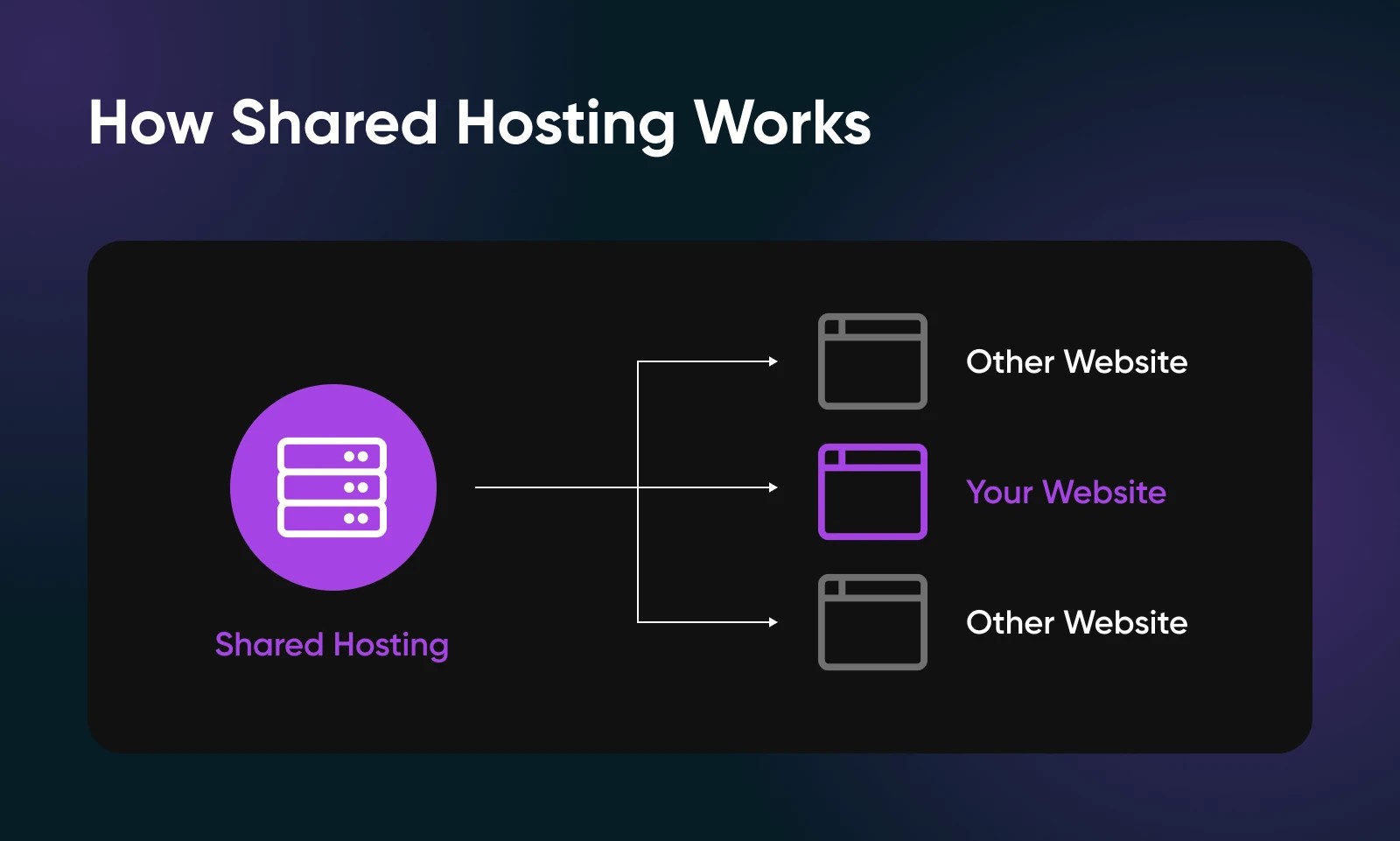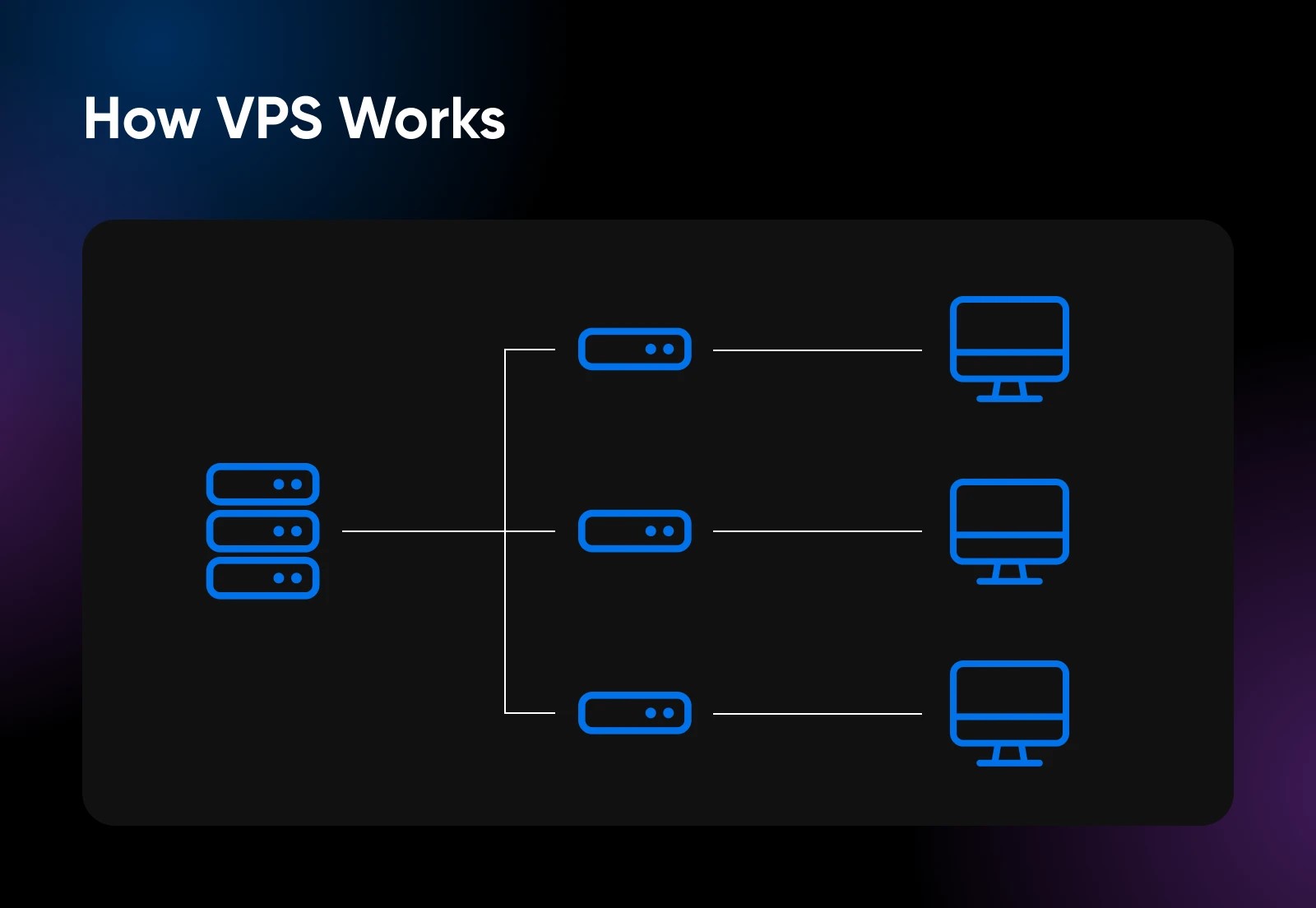Shared hosting plans are an excellent starting point for many website owners, but choosing the right one can be challenging. At CONDUCT.EDU.VN, we simplify this decision by offering A Comprehensive Guide To The Best Shared Hosting Plans available today, ensuring you find the perfect fit for your website’s needs. This guide explores the most affordable options, comparing key features and benefits to empower you with the knowledge to make an informed choice. Discover the ideal hosting solution that balances cost and performance for your online presence by reading our guide. Learn about shared web hosting, budget hosting, and small business hosting.
1. Understanding Shared Hosting: The Basics
Shared hosting is a type of web hosting where multiple websites reside on a single physical server. This means that the server’s resources, such as CPU, RAM, and storage, are shared among all the websites hosted on that server. Shared hosting is often the most affordable hosting option, making it popular among individuals, small businesses, and startups. The efficiency of resource sharing allows hosting providers to offer competitive pricing, ideal for those with budget constraints.
1.1 How Shared Hosting Works
In a shared hosting environment, each website has its own allocated space on the server, but they all draw from the same pool of resources. This is similar to living in an apartment building, where residents share common resources like the parking lot, swimming pool, and elevators. With shared hosting, the provider manages server maintenance, security updates, and technical support, allowing website owners to focus on content creation and business development.
1.2 Benefits of Shared Hosting
Shared hosting offers several key advantages:
- Cost-Effectiveness: It is the most budget-friendly hosting option, suitable for those starting out or with limited budgets.
- Ease of Use: Providers handle server management, making it easy for beginners to set up and manage their websites.
- Scalability: Many shared hosting plans offer options to upgrade as your website grows, providing flexibility and growth potential.
1.3 Limitations of Shared Hosting
While shared hosting is a great starting point, it also has limitations:
- Limited Resources: Shared resources can lead to slower performance if another website on the server experiences high traffic.
- Security Risks: Because you share a server with others, vulnerabilities on another site can potentially affect your own.
- Customization Restrictions: Shared hosting environments often have limitations on server customization and software installations.
2. Key Features to Look for in Shared Hosting Plans
When choosing a shared hosting plan, several features should be considered to ensure that the plan meets your website’s needs. These include storage, bandwidth, uptime guarantee, customer support, security measures, and ease of use.
2.1 Storage and Bandwidth
- Storage: The amount of storage space determines how much data (files, images, videos) you can store on the server. Choose a plan that offers enough storage for your current needs with room for future growth.
- Bandwidth: Bandwidth refers to the amount of data transferred between your website and its visitors over a given period (usually a month). Ensure the plan provides sufficient bandwidth to accommodate your website’s traffic.
2.2 Uptime Guarantee
Uptime is the percentage of time your website is accessible to visitors. A high uptime guarantee (99.9% or higher) is crucial to ensure your website is consistently available. Look for hosting providers that offer a solid uptime guarantee to minimize downtime. According to industry standards, an uptime of 99.9% is considered excellent, translating to minimal downtime per month.
2.3 Customer Support
Reliable customer support is essential, especially for beginners. Look for providers that offer 24/7 support through various channels, such as phone, email, and live chat. Test the support response time and quality before committing to a plan. Customer service should include technical assistance for server-related issues, guidance on website setup, and troubleshooting for common problems.
2.4 Security Measures
Security is paramount to protect your website and its visitors. Check for features like SSL certificates, firewalls, malware scanning, and regular backups. A secure hosting environment safeguards your data and enhances your website’s credibility. Hosting providers should implement robust security protocols to prevent unauthorized access, data breaches, and other cyber threats.
2.5 Ease of Use
A user-friendly control panel, such as cPanel or Plesk, makes it easy to manage your website, files, databases, and email accounts. Look for hosting providers that offer intuitive interfaces and helpful tutorials to simplify website management. Ease of use also extends to the setup process, with one-click installations for popular CMS platforms like WordPress, Joomla, and Drupal.
3. Top Shared Hosting Providers in the Market
Several hosting providers offer excellent shared hosting plans. Here are some of the top providers:
- Bluehost: Known for its affordable plans and WordPress integration.
- HostGator: Offers a range of hosting solutions with a user-friendly interface.
- DreamHost: Provides reliable hosting with a strong focus on security and privacy.
- SiteGround: Known for its excellent performance and customer support.
- A2 Hosting: Offers fast and reliable hosting with various server options.
3.1 Bluehost
Bluehost is a popular choice for beginners, offering affordable shared hosting plans with a free domain name, SSL certificate, and one-click WordPress installation. Their plans are designed to be scalable, allowing websites to grow without performance issues. Bluehost also provides 24/7 customer support via phone and live chat, ensuring help is always available when needed.
3.2 HostGator
HostGator offers a range of shared hosting plans suitable for different needs, from basic websites to e-commerce stores. Their plans include unlimited bandwidth, storage, and email accounts, as well as a free SSL certificate and website builder. HostGator also provides 24/7 customer support and a 45-day money-back guarantee.
3.3 DreamHost
DreamHost stands out for its commitment to security and privacy, offering shared hosting plans with unlimited bandwidth, storage, and email. They provide a free SSL certificate, domain privacy, and automated backups. DreamHost also offers a 97-day money-back guarantee and 24/7 customer support.
3.4 SiteGround
SiteGround is known for its excellent performance and customer support. Their shared hosting plans include free SSL certificates, daily backups, and a free CDN (Content Delivery Network). SiteGround uses innovative technologies like SSD storage and custom caching solutions to ensure fast loading times and reliable performance. They also offer 24/7 customer support via phone, email, and live chat.
3.5 A2 Hosting
A2 Hosting is known for its fast and reliable hosting solutions. Their shared hosting plans include free SSL certificates, SSD storage, and a range of server locations to choose from. A2 Hosting offers optimized servers for WordPress, Joomla, and other popular CMS platforms, ensuring excellent performance. They also provide 24/7 customer support and a anytime money-back guarantee.
4. Comparing Shared Hosting Plans: A Detailed Analysis
To help you make an informed decision, let’s compare the shared hosting plans of the top providers in more detail. This comparison will cover pricing, features, performance, and customer support.
4.1 Pricing
| Provider | Basic Plan Price (Monthly) | Key Features |
|---|---|---|
| Bluehost | $2.95 | Free domain, SSL certificate, 50 GB storage |
| HostGator | $2.75 | Unlimited bandwidth, storage, email accounts |
| DreamHost | $2.59 | Unlimited bandwidth, storage, email, free domain privacy |
| SiteGround | $6.99 | Free SSL, daily backups, free CDN |
| A2 Hosting | $2.99 | Free SSL, SSD storage, anytime money-back guarantee |


4.2 Features
| Provider | Key Features | Additional Benefits |
|---|---|---|
| Bluehost | Free domain, SSL certificate, 50 GB storage, one-click WordPress install | Scalable plans, 24/7 customer support |
| HostGator | Unlimited bandwidth, storage, email accounts, free SSL, website builder | 45-day money-back guarantee, easy-to-use control panel |
| DreamHost | Unlimited bandwidth, storage, email, free domain privacy, SSL certificate, automated backups | 97-day money-back guarantee, strong focus on security |
| SiteGround | Free SSL, daily backups, free CDN, SSD storage, custom caching | Excellent performance, 24/7 customer support, optimized for WordPress |
| A2 Hosting | Free SSL, SSD storage, anytime money-back guarantee, optimized servers, choice of server location | Fast and reliable hosting, developer-friendly tools |
4.3 Performance
| Provider | Performance Metrics | Strengths |
|---|---|---|
| Bluehost | Good loading times, reliable uptime | Solid infrastructure, optimized for WordPress |
| HostGator | Decent performance, suitable for low to medium traffic websites | Scalable resources, reliable service |
| DreamHost | Consistent uptime, fast server response times | Strong security measures, reliable performance |
| SiteGround | Fast loading times, excellent uptime, optimized caching | Advanced technologies, superior performance |
| A2 Hosting | Fast server speeds, optimized for performance, multiple server locations | Turbo servers for enhanced speed, developer-friendly features |
4.4 Customer Support
| Provider | Support Channels | Quality of Support |
|---|---|---|
| Bluehost | 24/7 phone, live chat | Helpful and responsive, suitable for beginners |
| HostGator | 24/7 phone, live chat, email | Good support, quick response times |
| DreamHost | 24/7 live chat, email, knowledge base | Knowledgeable and helpful, strong focus on customer satisfaction |
| SiteGround | 24/7 phone, live chat, email | Excellent support, quick and efficient problem-solving |
| A2 Hosting | 24/7 phone, live chat, email, ticketing system | Fast and reliable support, technical expertise |
5. Making the Right Choice for Your Website
Choosing the right shared hosting plan depends on your website’s specific needs and budget. Consider the following factors:
- Website Type: Determine the type of website you plan to host (blog, e-commerce store, business site) and choose a plan that supports its requirements.
- Traffic Volume: Estimate the amount of traffic your website will receive and select a plan with sufficient bandwidth and storage.
- Technical Skills: Assess your technical skills and choose a plan with a user-friendly control panel and reliable customer support.
- Budget: Determine your budget and choose a plan that offers the best value for your money.
5.1 Best Shared Hosting Plans for Beginners
For beginners, Bluehost and HostGator are excellent choices due to their user-friendly interfaces, affordable plans, and reliable customer support. These providers offer one-click installations for popular CMS platforms like WordPress, making it easy to set up a website.
5.2 Best Shared Hosting Plans for Small Businesses
Small businesses can benefit from DreamHost and SiteGround due to their strong focus on security, performance, and customer support. These providers offer features like free SSL certificates, daily backups, and optimized servers to ensure fast loading times and reliable performance.
5.3 Best Shared Hosting Plans for E-commerce
For e-commerce websites, A2 Hosting and SiteGround are excellent choices due to their fast server speeds, optimized performance, and robust security measures. These providers offer features like SSD storage, free SSL certificates, and PCI compliance to ensure a secure and reliable shopping experience for customers.
6. Optimizing Your Shared Hosting for Performance
Once you’ve chosen a shared hosting plan, there are several steps you can take to optimize your website for performance. These include:
- Choosing a Lightweight Theme: Select a lightweight WordPress theme that is optimized for speed and performance.
- Optimizing Images: Compress and optimize images to reduce file sizes and improve loading times.
- Using a Caching Plugin: Install a caching plugin to store static versions of your website and reduce server load.
- Minifying CSS and JavaScript: Minify CSS and JavaScript files to reduce their size and improve loading times.
- Using a CDN: Use a Content Delivery Network (CDN) to distribute your website’s content across multiple servers and improve loading times for visitors from different locations.
6.1 Choosing a Lightweight Theme
A lightweight theme can significantly improve your website’s loading times. Look for themes that are designed for speed and performance, with minimal code and optimized images. Some popular lightweight themes include GeneratePress, Astra, and OceanWP.
6.2 Optimizing Images
Large image files can slow down your website. Use image optimization tools like TinyPNG or ImageOptim to compress images without sacrificing quality. Also, use the correct image format (JPEG for photos, PNG for graphics) and resize images to the appropriate dimensions before uploading them to your website.
6.3 Using a Caching Plugin
Caching plugins like WP Rocket, W3 Total Cache, and LiteSpeed Cache can significantly improve your website’s performance by storing static versions of your pages and serving them to visitors. This reduces the load on your server and improves loading times.
6.4 Minifying CSS and JavaScript
Minifying CSS and JavaScript files removes unnecessary characters and spaces from the code, reducing file sizes and improving loading times. Use plugins like Autoptimize or WP Rocket to automatically minify your CSS and JavaScript files.
6.5 Using a CDN
A Content Delivery Network (CDN) stores your website’s content on multiple servers around the world, allowing visitors to download content from the server closest to their location. This can significantly improve loading times for visitors from different geographic regions. Popular CDN providers include Cloudflare, MaxCDN, and Amazon CloudFront.
7. Security Best Practices for Shared Hosting
Securing your website on a shared hosting environment is crucial to protect your data and prevent cyber attacks. Here are some security best practices:
- Use Strong Passwords: Use strong, unique passwords for your hosting account, WordPress admin, and database.
- Keep Software Updated: Keep your WordPress core, themes, and plugins updated to the latest versions to patch security vulnerabilities.
- Install a Security Plugin: Install a security plugin like Wordfence or Sucuri Security to monitor your website for malware, brute-force attacks, and other security threats.
- Enable Two-Factor Authentication: Enable two-factor authentication for your WordPress admin to add an extra layer of security.
- Regularly Back Up Your Website: Regularly back up your website to protect your data in case of a security breach or other disaster.
7.1 Use Strong Passwords
Using strong, unique passwords is the first line of defense against unauthorized access. Avoid using common passwords like “password” or “123456” and create passwords that are at least 12 characters long, with a mix of uppercase and lowercase letters, numbers, and symbols.
7.2 Keep Software Updated
Outdated software is a common target for hackers. Keep your WordPress core, themes, and plugins updated to the latest versions to patch security vulnerabilities. Enable automatic updates to ensure that your software is always up to date.
7.3 Install a Security Plugin
A security plugin can help protect your website from malware, brute-force attacks, and other security threats. Wordfence and Sucuri Security are popular choices, offering features like malware scanning, firewall protection, and security monitoring.
7.4 Enable Two-Factor Authentication
Two-factor authentication adds an extra layer of security to your WordPress admin by requiring a second verification code in addition to your password. Use a plugin like Google Authenticator or Authy to enable two-factor authentication for your account.
7.5 Regularly Back Up Your Website
Regularly backing up your website is essential to protect your data in case of a security breach or other disaster. Use a backup plugin like UpdraftPlus or BackupBuddy to automatically back up your website to a remote location like Dropbox or Google Drive.
8. When to Consider Upgrading from Shared Hosting
Shared hosting is a great starting point for many websites, but there may come a time when you need to upgrade to a more powerful hosting solution. Here are some signs that it’s time to upgrade:
- Slow Loading Times: If your website’s loading times are consistently slow, it may be time to upgrade to a VPS or dedicated server with more resources.
- Frequent Downtime: If your website experiences frequent downtime, it may be a sign that your shared hosting server is overloaded or unreliable.
- Resource Limits: If you’re constantly hitting resource limits on your shared hosting plan, it may be time to upgrade to a plan with more storage, bandwidth, or CPU power.
- Security Concerns: If you’re concerned about the security of your shared hosting environment, you may want to upgrade to a VPS or dedicated server with more robust security features.
- Customization Needs: If you need more control over your server environment or want to install custom software, you may need to upgrade to a VPS or dedicated server.
8.1 Slow Loading Times
Slow loading times can frustrate visitors and negatively impact your website’s search engine rankings. If your website takes more than 3 seconds to load, it may be time to upgrade to a hosting solution with more resources.
8.2 Frequent Downtime
Frequent downtime can damage your website’s reputation and result in lost revenue. If your website experiences frequent downtime, it may be a sign that your shared hosting server is overloaded or unreliable.
8.3 Resource Limits
Shared hosting plans often have limits on storage, bandwidth, and CPU power. If you’re constantly hitting these limits, it may be time to upgrade to a plan with more resources.
8.4 Security Concerns
Shared hosting environments can be more vulnerable to security threats than VPS or dedicated servers. If you’re concerned about the security of your website, you may want to upgrade to a hosting solution with more robust security features.
8.5 Customization Needs
Shared hosting plans often have restrictions on server customization and software installations. If you need more control over your server environment or want to install custom software, you may need to upgrade to a VPS or dedicated server.
9. Exploring Alternative Hosting Options: VPS and Dedicated Hosting
If shared hosting no longer meets your needs, there are alternative hosting options to consider, such as VPS (Virtual Private Server) hosting and dedicated hosting.
9.1 VPS Hosting
VPS hosting provides a virtualized server environment with dedicated resources, offering more control and scalability than shared hosting. With VPS hosting, you share a physical server with other users, but each VPS has its own allocated resources, such as CPU, RAM, and storage.
9.2 Dedicated Hosting
Dedicated hosting provides an entire physical server dedicated to your website, offering maximum control, performance, and security. With dedicated hosting, you don’t share resources with other users, giving you complete control over the server environment.
9.3 Key Differences Between VPS and Dedicated Hosting
| Feature | VPS Hosting | Dedicated Hosting |
|---|---|---|
| Resources | Dedicated virtual resources | Entire physical server |
| Control | More control than shared hosting | Maximum control |
| Scalability | Highly scalable | Limited by server hardware |
| Cost | More expensive than shared hosting | Most expensive hosting option |
| Technical Skills | Requires some technical skills | Requires advanced technical skills |
| Security | More secure than shared hosting | Highest level of security |
10. Frequently Asked Questions (FAQs) About Shared Hosting
Here are some frequently asked questions about shared hosting:
- What is shared hosting?
Shared hosting is a type of web hosting where multiple websites reside on a single physical server, sharing resources such as CPU, RAM, and storage. - Is shared hosting suitable for my website?
Shared hosting is suitable for small to medium-sized websites with moderate traffic, such as blogs, personal websites, and small business sites. - What are the benefits of shared hosting?
The benefits of shared hosting include cost-effectiveness, ease of use, and scalability. - What are the limitations of shared hosting?
The limitations of shared hosting include limited resources, potential security risks, and restrictions on server customization. - How do I choose the right shared hosting plan?
Choose a shared hosting plan based on your website’s specific needs, budget, and technical skills. - How can I optimize my shared hosting for performance?
Optimize your shared hosting for performance by choosing a lightweight theme, optimizing images, using a caching plugin, minifying CSS and JavaScript, and using a CDN. - What are the security best practices for shared hosting?
Follow security best practices such as using strong passwords, keeping software updated, installing a security plugin, enabling two-factor authentication, and regularly backing up your website. - When should I consider upgrading from shared hosting?
Consider upgrading from shared hosting when your website experiences slow loading times, frequent downtime, resource limits, security concerns, or customization needs. - What are the alternative hosting options to shared hosting?
Alternative hosting options to shared hosting include VPS hosting and dedicated hosting. - Which shared hosting provider is the best?
The best shared hosting provider depends on your website’s specific needs and budget. Some top providers include Bluehost, HostGator, DreamHost, SiteGround, and A2 Hosting.
Choosing the right shared hosting plan is essential for the success of your website. By understanding the basics of shared hosting, key features to look for, top providers in the market, and optimization and security best practices, you can make an informed decision and ensure that your website has a solid foundation for growth. For more detailed information and personalized guidance, visit conduct.edu.vn or contact us at 100 Ethics Plaza, Guideline City, CA 90210, United States, or WhatsApp at +1 (707) 555-1234.

